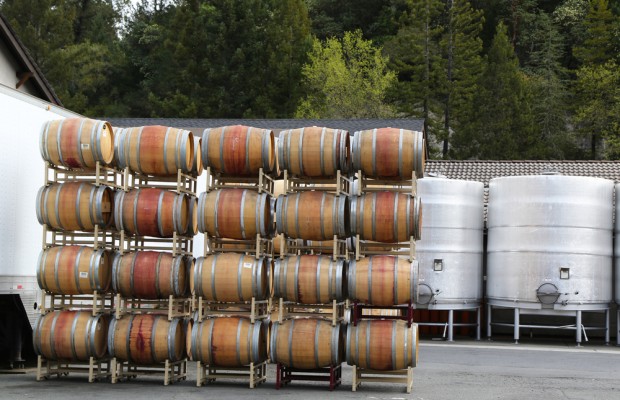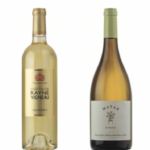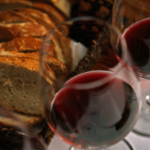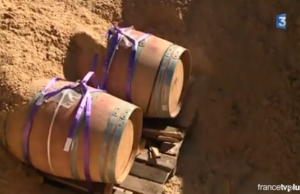The Great Debate – Oak Wine Barrels or Stainless Steel Wine Drums?

Ask any winemaker about their views on which is better – oak wine barrels or stainless steel drums – and you will receive a strong reaction. I was always a bit confused about the difference, so I did a little research. What I discovered is that there are advantages as well as drawbacks with either method.
The fermentation and aging of wine is perhaps the most important aspect of creating an outstanding finished product. How long you age a wine and what you store it in during that aging process can make the difference between producing a mediocre product versus an award-winning contribution.
Oak wine barrels have been used for centuries in the fermentation and aging processes of wine by wine crafters. Aging wine in oak wine barrels provides the wine with aromas that would typically be found on your spice rack – nutmeg, cinnamon, allspice, vanilla and clove to name a few. And as it passes over your tongue, hints of caramel, mocha, butter and toffee are just a few that come forward.
The oak that is used when manufacturing these barrels comes primarily from one of two countries – America or France. Although they are similar, French oak is typically more expensive, has higher wood tannins, and the grain is narrower. Why are these differences important? The American variety tends to have a more significant influence on the finished flavor of the wine – specifically the wine has a sweeter palate profile, and imparts nuances of vanilla. However, on the other hand French oak is considered to be the “gold standard” in the industry.
Wood (and specifically oak) is a fundamentally porous material by nature, and that means a liquid stored in oak will experience some degree of evaporation. This natural process contributes to the concentration of the wine (much like the way chefs “reduce” a sauce on the stovetop to intensify it) with respect to both aroma and flavor. And then there are even more factors, such as where the trees were grown and how the wood was dried. All of these variables contribute to the results with fuller and richer complexity and impressions that can only be achieved with fermenting and aging wine in oak barrels.
So why would a serious winemaker ever choose stainless steel over oak? I discovered there are several reasons why.
First of all, stainless steel wine drums are durable. They can be used over and over, year after year. The life of an oak barrel is between two and three years, depending on many factors. This means that oak trees must be harvested regularly, stripping our forests. And wine is highly acidic, and that acid tends to corrode the wood over time. So it makes economic sense for wineries to replace oak barrels with stainless steel. This economic advantage is important to winemakers because wineries use large quantities of barrels and using steel barrels allows them to reduce costs.
And using steel barrels provides another advantage as well. They impart no flavor into the wine, so they are perfect for experimenting with exact flavors. With oak barrels it is difficult to control the wine’s exposure to air, and this exposure can alter the flavor of the wine dramatically. Steel barrels allow much more control over flavors.
And there is one more factor to consider. Stainless steel barrels are much easier to clean than oak barrels. They have a very smooth surface inside, so cleaning them takes almost no time. Oak barrels tend to get scratched on the inside, and the wine seeps into those scratches and lingers long after the wine is removed. And this means that the flavor of the next wine to be stored in that barrel will be influenced by the remnants of the wine that was aged in that barrel previously. And this can interfere with both the flavor and the quality of the wine. And when you use steel barrels there are no woodnotes present, and the finish is crisp, fresh and light and the wine becomes more fruit forward (which is what many people prefer.)
When all is said and done, every wine, whether aged in oak or stainless steel, has its own elite group of followers. And for the consumer it is a win-win situation because they have the option of enjoying wines created by both processes, depending on their mood. Wine created through both methods are easy to enjoy and appreciate.



















